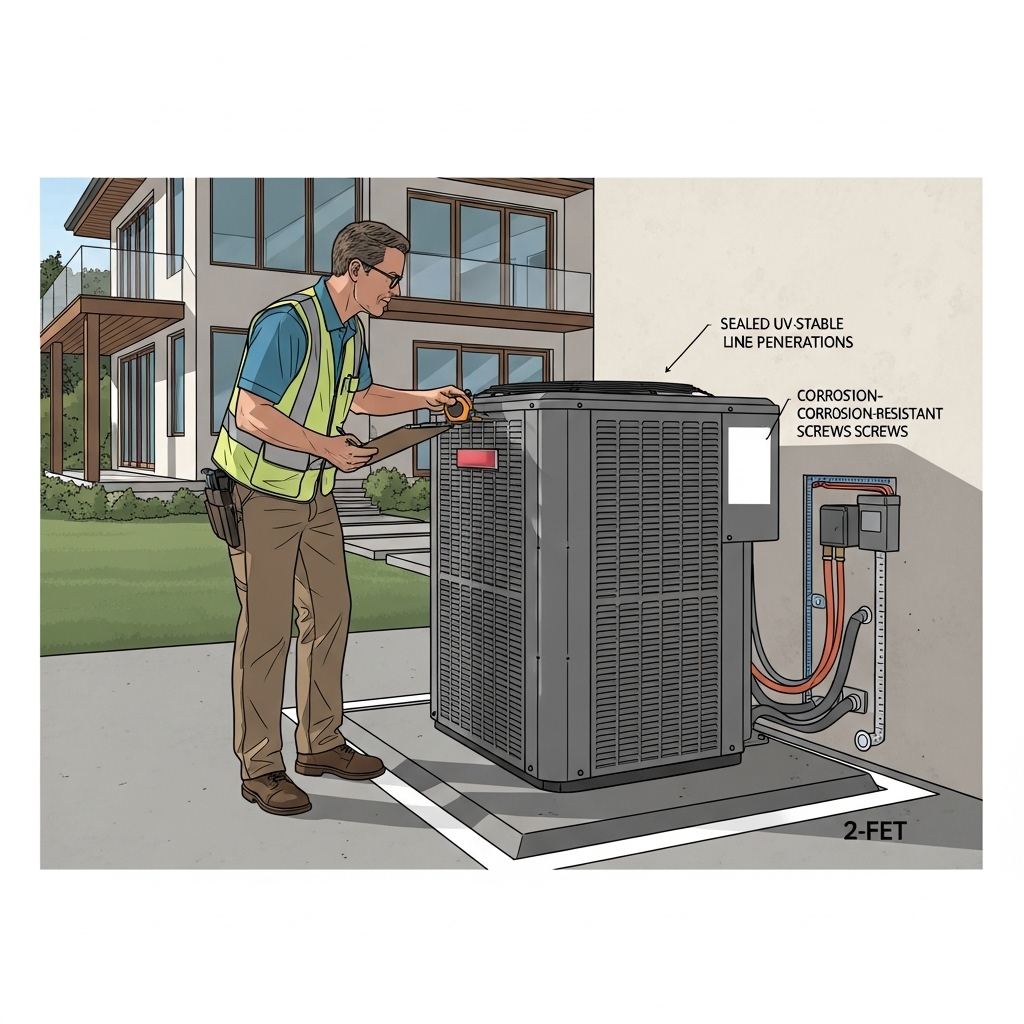Whether you’re replacing an aging system, selling a home, or preparing for summer, understanding inspection requirements helps Malibu homeowners avoid delays and rework. This guide explains the types of inspections that apply to residential cooling systems, what inspectors commonly look for, and how to prepare your home so the process goes smoothly the first time. You will also find practical checklists that reflect Malibu’s coastal conditions—salt air, fog, canyon winds, and wildfire seasons—which shape how equipment should be installed and maintained. We begin with the big picture of why inspections matter and how they connect to reliable, efficient air conditioning performance in coastal California.
Why inspections exist and what they cover
Inspections protect health, safety, and energy performance. For cooling systems, officials verify proper electrical work, safe refrigerant handling, adequate airflow and duct sealing, correct condensate management, and appliance placement that respects property lines, clearances, and service access. In coastal zones like Malibu, inspectors also pay particular attention to corrosion risks, anchorage, and weatherproofing.
When inspections are required
- Equipment replacement: Swapping an outdoor condenser and indoor coil or air handler typically requires a permit and inspection.
- New installations: Any new system, whether ducted or ductless, must be permitted and inspected for code compliance.
- Duct alterations: Replacing or significantly modifying ducts often triggers testing and documentation requirements.
- Home sales and pre-listing checks: While not always mandated, many sellers commission an HVAC inspection to assure buyers and streamline negotiations.
What inspectors commonly look for
- Electrical safety: Correctly sized breakers, dedicated circuits, labeled disconnects, and proper grounding and bonding.
- Refrigerant line protection: UV-resistant insulation, sealed wall penetrations, and proper support for line sets.
- Condensate disposal: Adequate slope, cleanouts where required, and overflow protections for attic or closet installations.
- Equipment placement: Clearances from walls, vegetation, and openings; compliant setbacks; and service access.
- Anchorage and weatherproofing: Secure mounting for ground and roof installations, corrosion-resistant fasteners, and sealed curbs or pads.
- Duct integrity and airflow: Proper sealing at joints and boots, insulation in unconditioned spaces, and sufficient return air capacity.
Coastal considerations in Malibu
Salt and moisture accelerate corrosion on outdoor equipment, fasteners, and electrical components. Inspectors take note of hardware and protective measures near the ocean. UV exposure can degrade line-set insulation on rooftops and along exterior walls. Where equipment is near landscaping irrigation, inspectors look for splash patterns that may damage coils and cabinets. Finally, wildfire seasons create unique debris risks around outdoor units; clear defensible space helps safety and airflow.
Preparing for inspection day
- Verify permits are active and posted as required. Keep documentation handy for the inspector, including equipment model information and design details if requested.
- Clear access to the outdoor unit, indoor equipment, electrical panel, and attic or crawl spaces. Move vehicles if they block ladders or roof access.
- Check visible details: secure panels, intact line-set insulation, sealed penetrations, and clear condensate lines.
- Confirm thermostat operation and labeling for zones if present.
- Ensure that documentation from testing or commissioning is printed or readily accessible.
Documentation that helps you pass on the first visit
- Equipment model and serial numbers and the matched pairing record.
- Commissioning notes: airflow verification, control setup, and performance readings.
- Duct testing results if ducts were replaced or altered, and any required forms.
- Details on corrosion protection applied near the coast and materials used for fasteners and insulation.
Common reasons cooling systems fail inspection
- Inadequate clearances around the outdoor unit due to landscaping or property constraints.
- Poorly sealed or insulated ducts, especially in hot attics.
- Missing or damaged line-set insulation exposed to UV.
- Improper condensate slope or lack of overflow protection at indoor units above living spaces.
- Unlabeled or inaccessible disconnects, or breakers that do not match equipment requirements.
- Unsealed wall penetrations or roof curbs that admit moisture.
How to prepare older homes
Classic Malibu homes often have narrow return paths, limited mechanical space, and older electrical systems. Plan improvements that bring the whole system into harmony: increased return capacity, thoughtful equipment placement, and updated electrical service as needed. Discuss corrosion resistant hardware and UV-stable insulation with your contractor, especially if your property is close to breaking surf.
Homeowner pre-checklist
- Outdoor area is clear of vegetation and debris for at least 24 inches around equipment and five feet above.
- Panels and fasteners are tight; no obvious corrosion on disconnects.
- Line-set insulation is continuous and undamaged from sun exposure.
- Condensate drain is unobstructed and routed to an appropriate termination.
- Attic or closet access is open and safe for ladder use.
- Thermostat operates correctly and zones (if any) are labeled.
Mid-process review for contractors and owners
Before requesting the inspection, walk through the installation with the checklist above and correct any minor items. Confirm documentation is complete and accessible. This is also a good moment to revisit the fundamentals of air conditioning performance—clear airflow, moisture control, and proper electrical work—so you can speak confidently with the inspector and understand any recommendations.
After you pass
Keep your paperwork, including commissioning notes and testing results, in a home maintenance file. Set reminders for seasonal filter checks and consider a maintenance plan that addresses Malibu’s coastal conditions with coil rinsing and corrosion checks. Post-install adjustments, such as balancing airflow to stubborn rooms, are easier when you can reference original commissioning data.
Frequently asked questions
Q: Do all replacements require permits? A: Most equipment replacements and significant duct changes require permits and inspections. Consult your contractor for current requirements and to file on your behalf.
Q: How long does inspection scheduling take? A: Timelines vary with workload and project complexity. Having clear access and complete documentation speeds the process.
Q: What if my older home can’t meet certain modern standards? A: Contractors can propose compliant solutions that respect constraints, such as improved return paths, alternative equipment placements, or duct design updates.
Q: Are special corrosion protections required near the ocean? A: While specifics depend on location and design, inspectors expect durable materials and practices suitable for coastal exposure.
Q: Can I be present during the inspection? A: Yes, and it’s helpful. You can provide access, answer location questions, and receive feedback firsthand.
Move forward with confidence
With a clear plan, complete documents, and a tidy jobsite, most Malibu projects pass inspection on the first attempt. If you want a concise refresher on design, maintenance, and performance best practices that keep coastal systems reliable, speak with a qualified local pro who understands the nuances of Malibu’s climate and can help you select, install, and maintain air conditioning equipment that delivers comfort year after year.

